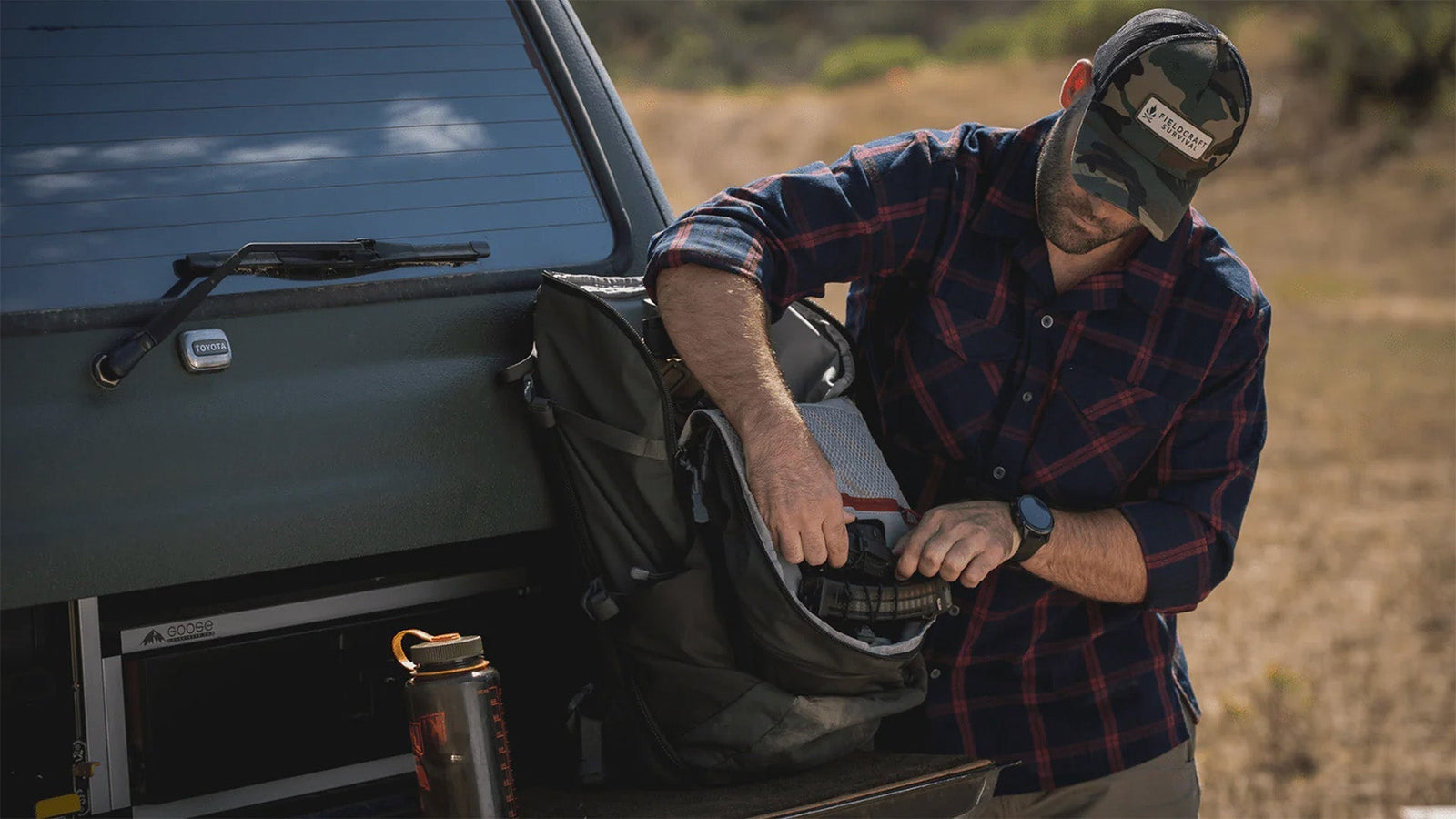When the time comes to grab your gear and go, your bug-out bag (BOB) isn’t just a backpack—it’s your mobile lifeline. Whether you're evacuating due to a wildfire, natural disaster, civil unrest, or a total grid-down scenario, having the right emergency gear (and not unnecessary bulk) can make the difference between struggle and survival.
So, what are the most common bug-out bag packing mistakes? And how do you build a bug-out bag that’s practical, streamlined, and tailored to your real-world needs?
Let’s break it down: what to do, what to skip, and how to pack it right the first time.
Common Bug-Out Bag Mistakes to Avoid
Before we talk about the essentials, let’s look at what many preppers get wrong when building their BOB:
- Overpacking: You’re not relocating—you’re escaping. Your bug-out bag should weigh no more than 15–20% of your body weight.
- No Personalization: A copy-and-paste checklist won’t work. Your BOB should be customized for your geography, climate, skills, and family needs.
- Too Much Tactical, Not Enough Practical: Don’t sacrifice basic needs for “cool” gear. Twelve knives are useless if you forget clean socks or water purification.
- Untried Gear: Don’t wait for a real emergency to learn how your gear works. Practice using it in safe conditions now.
Bug-Out Bag Essentials Checklist: Pack for the Rule of Threes
Your bug-out bag should cover the survival Rule of Threes: 3 minutes without air, 3 hours without shelter in harsh conditions, 3 days without water, and 3 weeks without food.
Shelter & Warmth
- Lightweight tarp or bivy sack
- Emergency blanket (Mylar or wool for cold climates)
- Compact sleeping bag rated for your environment
- Poncho or rain gear
- Extra socks (2+ pairs)
Fire & Heat
- Fire starters or waterproof matches
- Tinder (cotton balls with petroleum jelly or a commercial puck)
- Compact camping stove or foldable firebox
Water
- Stainless steel bottle (boil-safe)
- Portable water filter (like Sawyer, Lifestraw & Grayl)
- Water purification tablets or drops
Food
- High-calorie emergency rations (ReadyWise or similar)
- Protein and energy bars
- Compact utensil set, small pot or cup
- Manual can opener (if including canned goods)
Tools & Utility
- Fixed-blade survival knife
- Multitool with pliers and blades
- 50–100 ft of paracord
- Headlamp with extra batteries
- Duct tape (wrapped around bottle or lighter)
- Folding saw or wire saw
First Aid
- Comprehensive first-aid kit (not just a basic travel kit)
- Trauma supplies: tourniquet, Israeli bandage, chest seal
- Personal medications (antibiotics, EpiPens, inhalers, etc.)
Navigation & Communication
- Local topographic map (laminated or in waterproof pouch)
- Quality compass
- Hand-crank or solar-powered emergency radio
- Whistle and mirror for signaling
Hygiene & Sanitation
- Travel-size baby wipes
- Toothbrush and toothpaste
- Toilet paper or compact rolls
- Hand sanitizer
- Feminine hygiene products (if needed)
How to Personalize Your Bug-Out Bag
No two bug-out bags should be identical. Here’s how to adapt yours to your household or situation:
👶 Bugging Out with Kids?
- Pack extra snacks, diapers, small toys, and child-safe meds
- Consider a foldable wagon or stroller for mobility
🐾 Have Pets?
- Pack a few days' worth of food, collapsible bowl, and leash
- A dog harness with storage pouches can help carry the load
🧓 Caring for Elderly or Medically Fragile Family?
- Include mobility aids, ID cards, critical medications
- Add a light stool for rest if walking is a challenge
🧍♂️ Going Solo?
- Prioritize stealth (no noisy gear) and compact self-defense tools
- Keep weight as low as possible for mobility and speed
Choose Multi-Use Gear That Earns Its Weight
The best survival gear serves more than one purpose. Smart choices include:
- A poncho that works as a rain jacket and shelter tarp
- A stainless steel bottle that purifies and boils water
- A bandana usable as a pre-filter, sling, or shade cloth
You don’t need hundreds of items. You need the right ones. Everything we stock at MountainReady.online is tested for survival use. If it’s in our store, it’s proven in the field.
Final Tips: Pack, Test, Repack
- Field-test your gear. Take your bag on a hike or overnight campout and note what works and what doesn’t.
- Rotate for the season. Your summer gear won’t cut it in freezing temps—adjust for weather and climate shifts.
- Make it grab-and-go. Store it in your car, closet, or an easily accessible spot near your exit route.
You won’t get a warning before disaster hits—but you can decide today how ready you’ll be. Build your bug-out bag with intention and it won’t just carry gear—it’ll carry your ability to survive and adapt.


